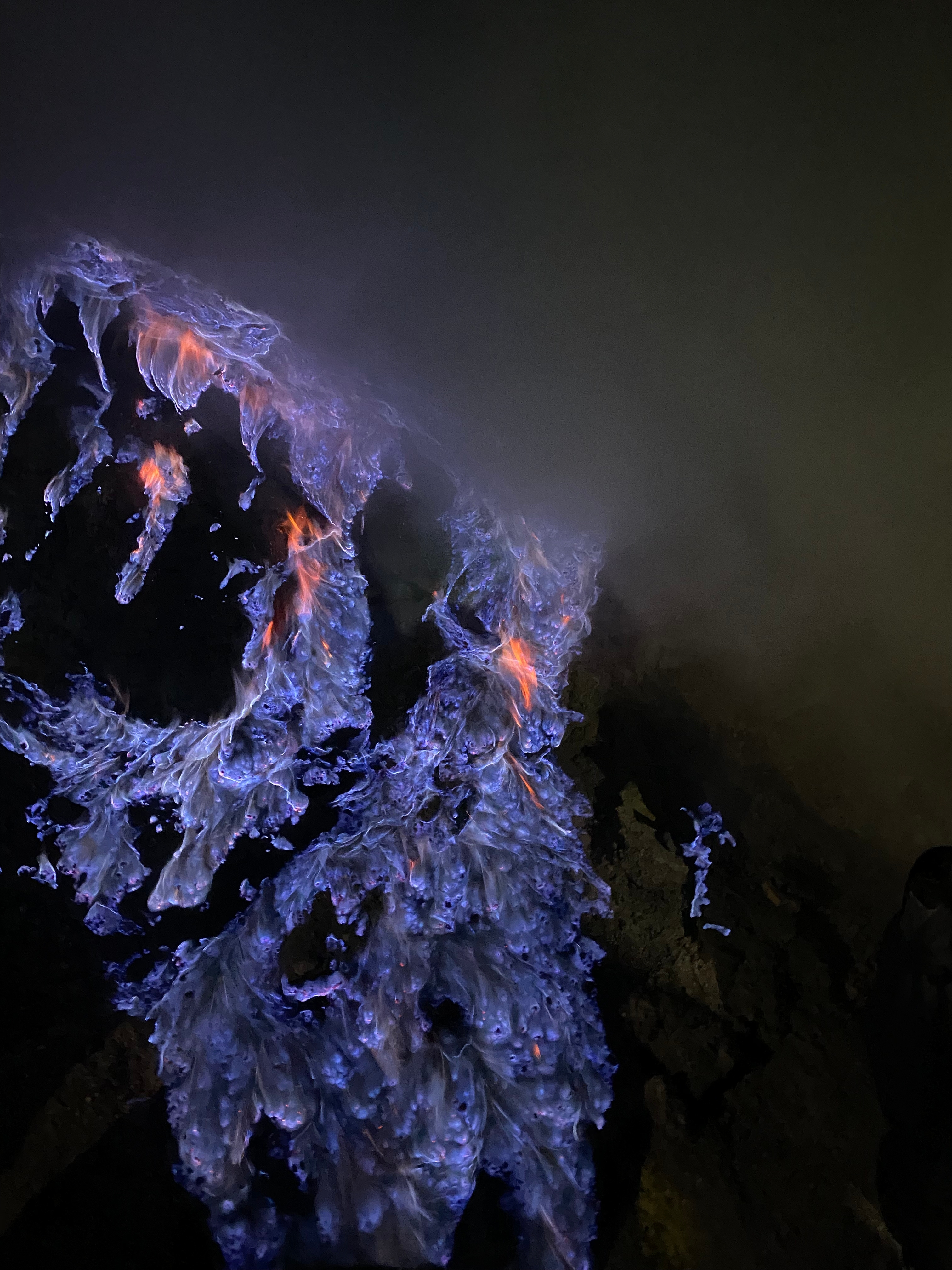Blue lava oozes from the Kawah Ijen volcano of East Java. The flowing molten rock gets its vibrant appearance through the combustion of sulfur gas, which burns blue, as it seeps out from volcanic cracks at high temperatures and reacts with oxygen in the air.
The rest of this article is behind a paywall. Please sign in or subscribe to access the full content.
Sulfur is often abundant in volcanic settings, but it’s thought that Ijen is the only volcano in the world that regularly burns blue thanks to its unusually large sulfur deposits and the intense heat of its hydrothermal system, which can reach more than 600°C (1,112°F)
If you look closely (image below), you’ll notice the physical lava itself is not totally blue. Instead, the color comes from an intense but soft blue flame emanating from the lava, like the one you see on a shot of alcohol that’s been set alight. As a result, it’s best seen at night (not dissimilar to a flaming shot of tequila).
Flames on the lava at Ijen seen up close.
Image credit: Jacxzzz/Shutterstock.com
The Ijen crater volcano is located in East Java, Indonesia, not far from where the Sunda Plate meets the Australian Plate. This type of tectonic boundary is often the site of intense geological activity as the clashing and colliding of plates can generate magma and create the conditions necessary for volcano formation.
Ijen isn’t a single volcano, but a complex containing around 22 eruption points around the rim of the caldera. Listed as a UNESCO site as part of the “Ijen Biosphere Reserve”, the area is famous for its extraordinary natural sights, including its electric blue lava and the turquoise acid lake that fills the main crater.
The main hydrological feature in the caldera is the Kawah Ijen crater lake, formed by the collapse of a magma chamber after a major eruption. It gaping hole has since been filled with turquoise-tinged water that is highly acidic, with pH values as low as 0.5, similar to battery acid. These unusual qualities are the result of the crater lake’s surrounding geology, which has allowed sulfuric and hydrochloric acids to form as well as other minerals to dissolve into the water.
The Kawah Ijen crater lake.
Image credit: efendy ada/Shutterstock.com
The Ijen volcano complex doesn’t just draw tourists with its surreal blue flames, it also fuels a trade in what locals grimly nickname “Devil’s Gold.” Miners tap into the volcano’s sulfur-rich vents, channeling the vapors through pipes. As the gas cools, it condenses into molten sulfur, which quickly hardens into bright yellow slabs along the rocky ground. These jagged chunks are pried loose, hoisted into baskets, and carried down the mountain to collection points.
The solid sulfur is then sold where it’s used for a variety of industrial and agricultural processes. Some of it is even turned into bright yellow ornaments. It’s back-breaking, debilitating work linked to a wealth of occupational health hazards.
So while the Ijen volcano complex may look alluring, it’s a sight best enjoyed from afar.
Source Link: Blue Lava And Battery Acid Lakes Adorn The Ijen Volcano of Indonesia
